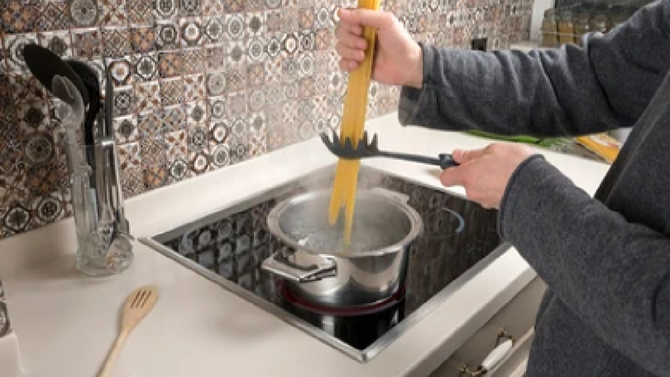Portion Control Tools - Do They Work in Practice?

- Project start date: 1 January 2019
- Project status: Completed
- Project type: Nutrition
- Discipline: Food skills
- Author/s: Dr Caomhan Logue, Ulster University
Research objective
- To determine patterns of use of a 200-ml portion cup within the family setting
- To determine whether the introduction of the 200-ml portion cup to the household led to behavioural changes regarding portion size
- To gain an in-depth insight into participants’ attitudes towards the usability and acceptability of the portion cup for long-term use within the family setting.
Outputs
Research report
- Title: Portion control tools - do they work in practice?
- Publication date: 14 November 2022
- Summary: The use of a portion cup within the family setting helped to highlight the importance of portion size, as well as increasing awareness of appropriate portion sizes.
- Findings:
- A total of 106 households were recruited from across the IOI and data was collected from 83 households at week 3 (78% retention rate) and 80 households at week 6 (75% retention rate).
- 9 out of 10 households reported using the portion cup for measuring portions at week 3 and week 6.
- Around 9 out of 10 respondents reported that the portion cup was ‘very acceptable’.
- The portion cup was acceptable for use in the home setting, but most people stated that it would not be used outside the home.
- While most respondents reported that the portion cup was usable, some practical issues were raised by a small proportion of respondents including recommended potion sizes were perceived to be too small, markings being erased following repeated washing and markings on the portion cup being too small to read.
- Consistent use of the portion cup was observed over the intervention period and was used by around 8 out of 10 households at breakfast, by around 1 out of 10 households at lunch and by 9 out of 10 households for amorphous foods such as cereal, rice or pasta and used for all members of the household in 86-89%.
- Feedback from the focus groups, however, suggested that use of the portion cup for all members of the household was transient, only being used for measuring children’s portion sizes initially.
- Engagement by males within the household was limited.
- Daily use of the portion cup diminished by the end of the intervention (week 3, 42%; week 6, 25%) with reported use 4-6 days per week becoming more common by week 6 (week 3, 39%; week 6, 48%).
- Most respondents reported that introduction of the portion cup into the household resulted in behavioural changes around portion size including an increased awareness of appropriate portion size and an improved ability to judge portion size and increased confidence in this regard.
- These positive behavioural changes persisted for the duration of the intervention.
- Recommendations:
- The use of a portion cup within the family setting helped to highlight the importance of portion size, as well as increasing awareness of appropriate portion sizes. Consideration should be given to incorporating the portion cup into public health campaigns along with specific guidance on the recommended number of servings over the course of the day and the size of servings for different food groups.
- The provision of portion cups that are designed for specific stages of the lifecycle i.e. a portion cup for adults or a portion cup for children should be considered to maximise and optimise engagement across the whole family.
- Any portion tools need to be designed so that they are durable and easy to use.
- Consider novel approaches for promoting long-term use and engagement with all members of the household such as integrating the portion cup with existing technologies, e.g. by adding a QR code to the portion cup, which can sign-post consumers to accessible, detailed, and user-friendly portion size information via an app or website.
Download
Other outputs
Similar research
- Prepared convenience foods and associated food safety risks (2019)
- Assessment of the use of meat thermometers by consumers on the island of Ireland (2018)
- Weaning practices on the island of Ireland (2016)
- Managing food on shift work (2014)
- The impact of cooking and related food skills on healthiness of diets (2014)
- Consumer understanding of food portion sizes (2010)
- Early school leavers: a needs assessment from a nutrition perspective (2010)




